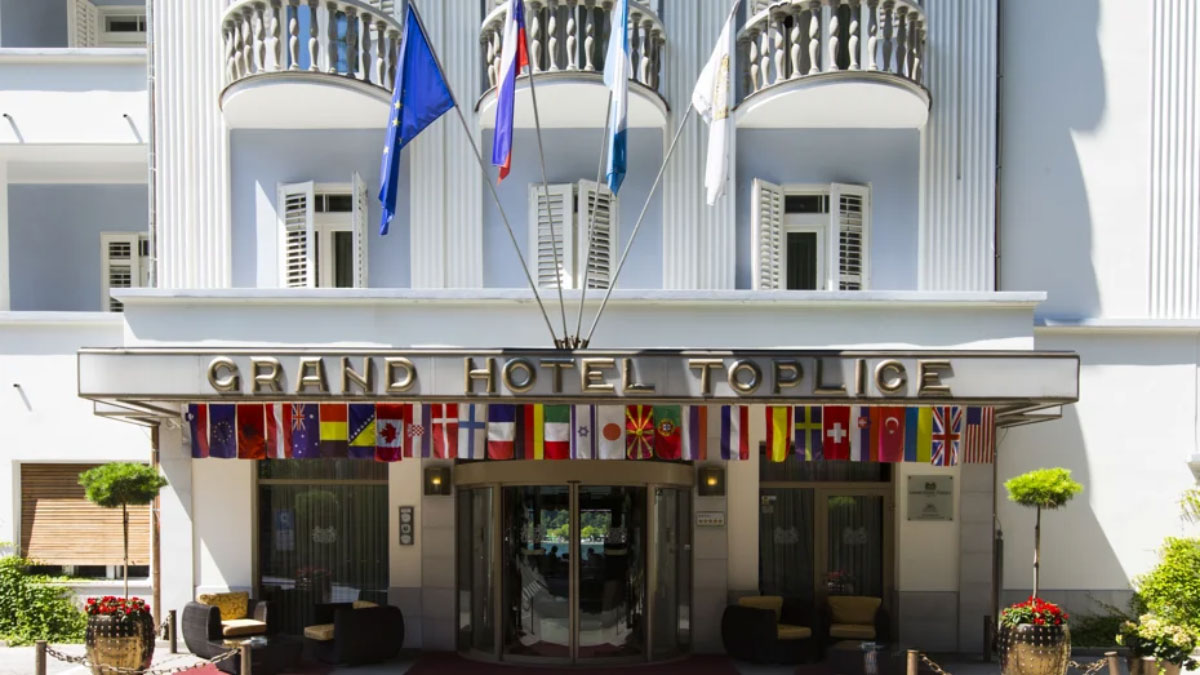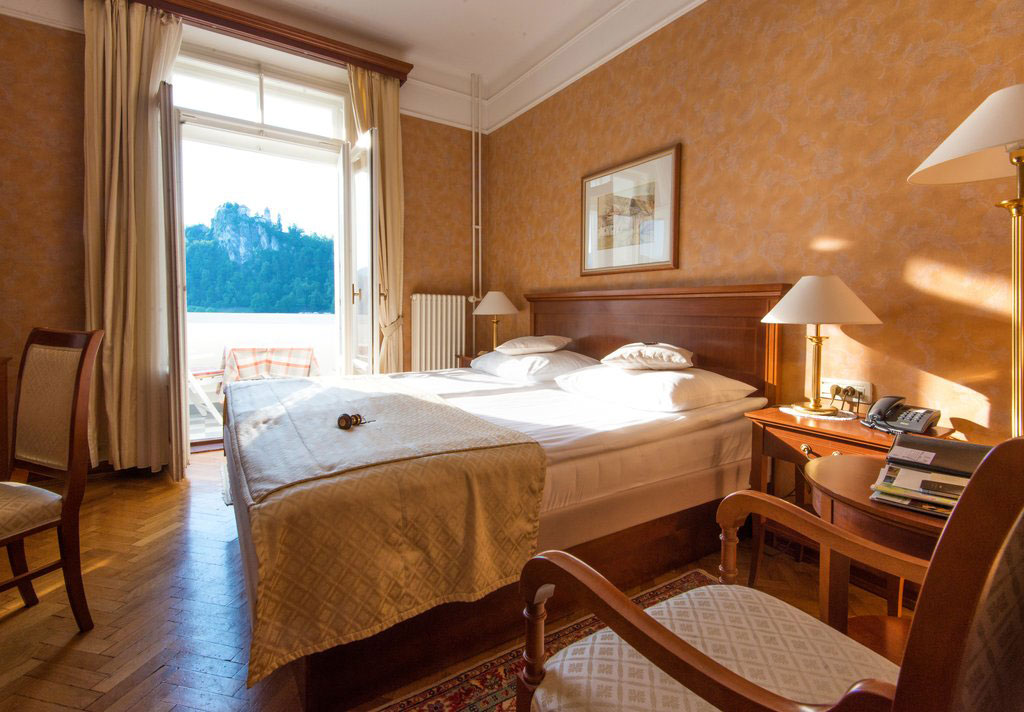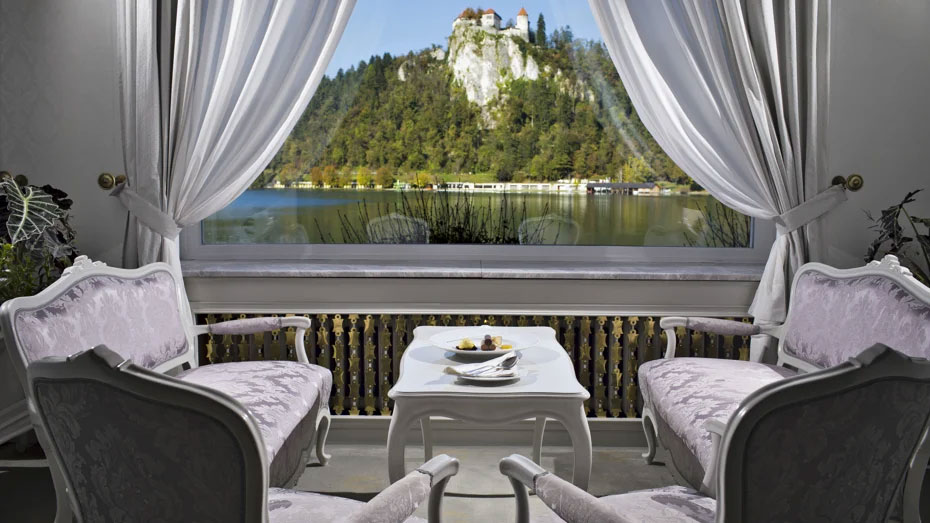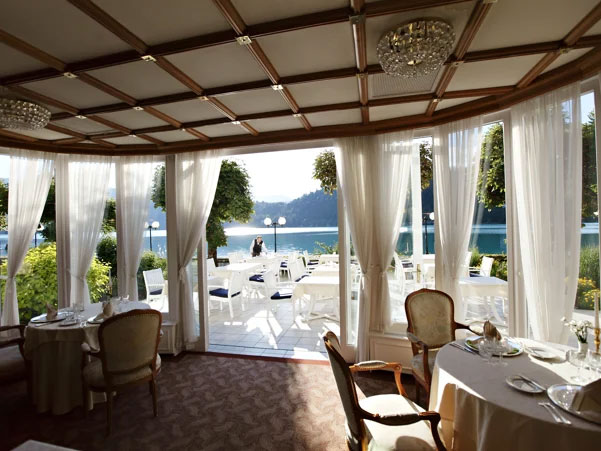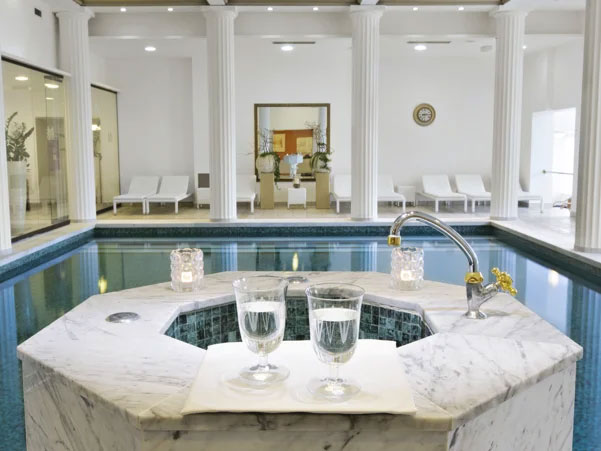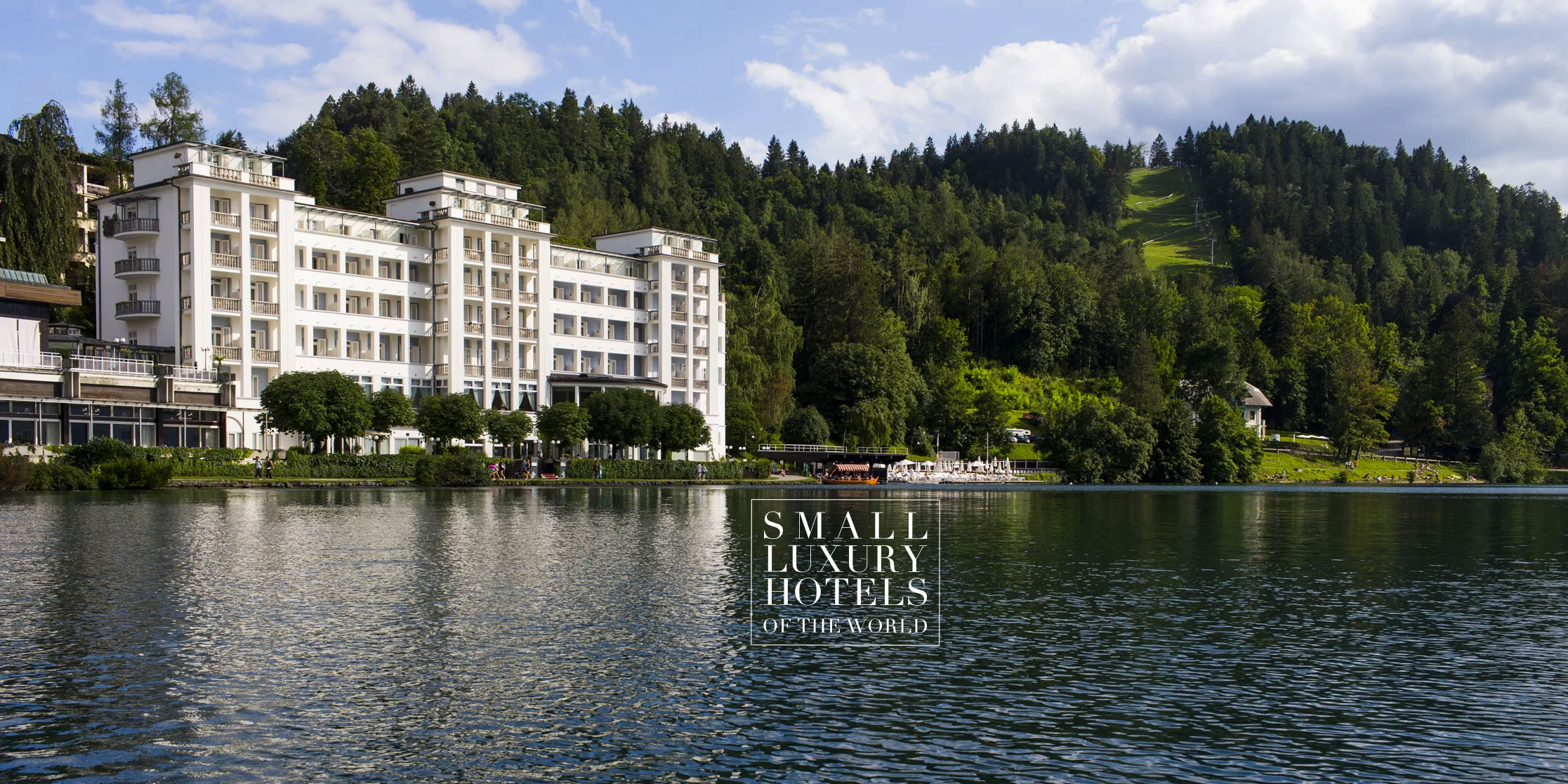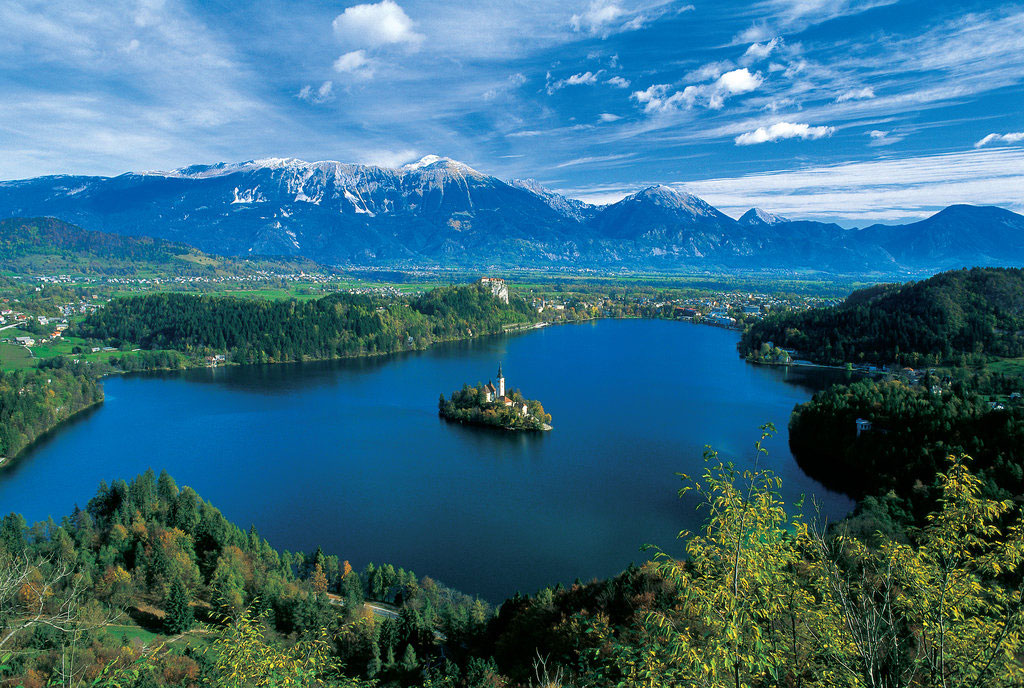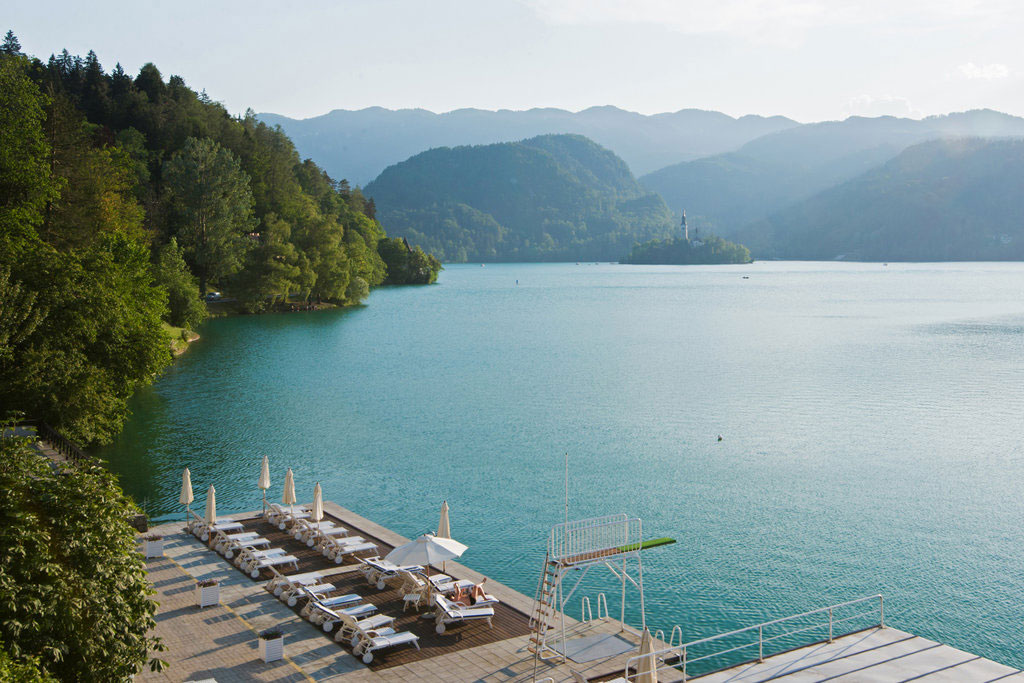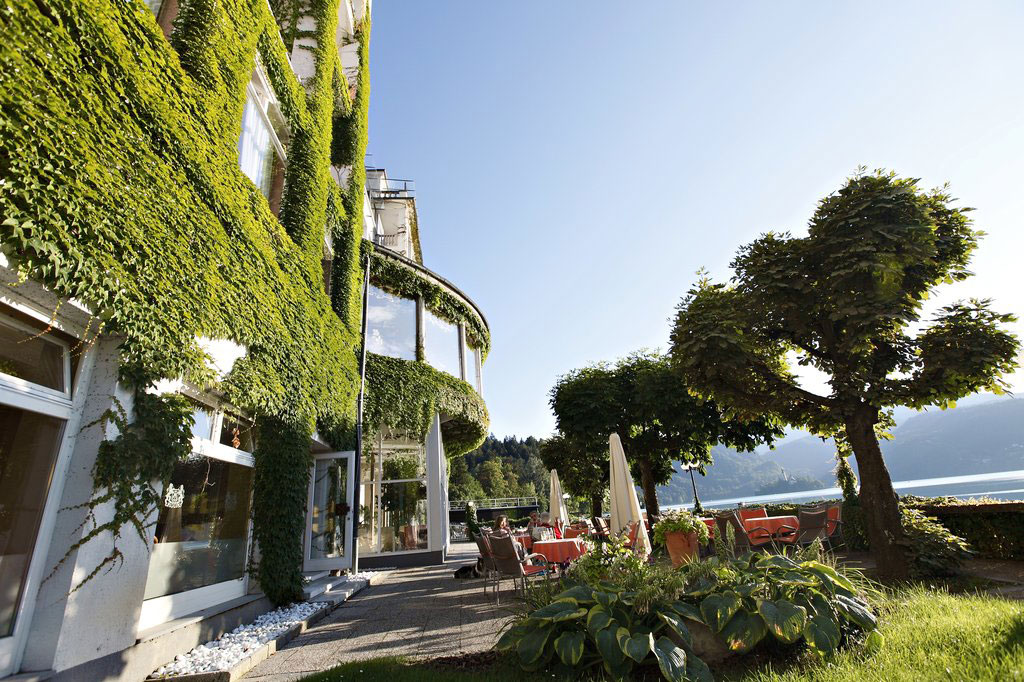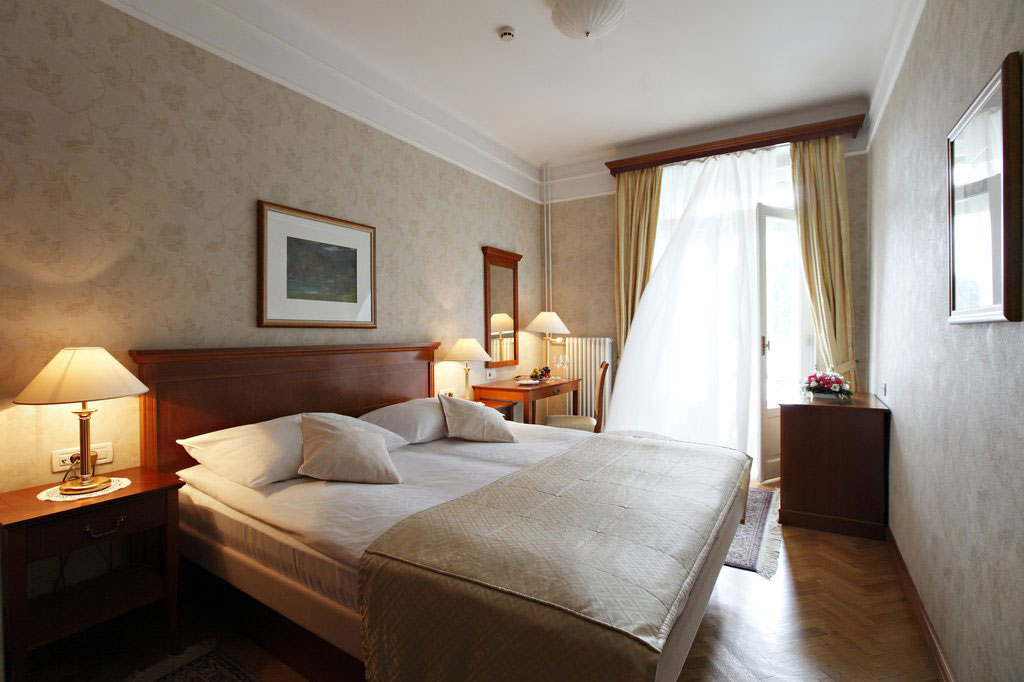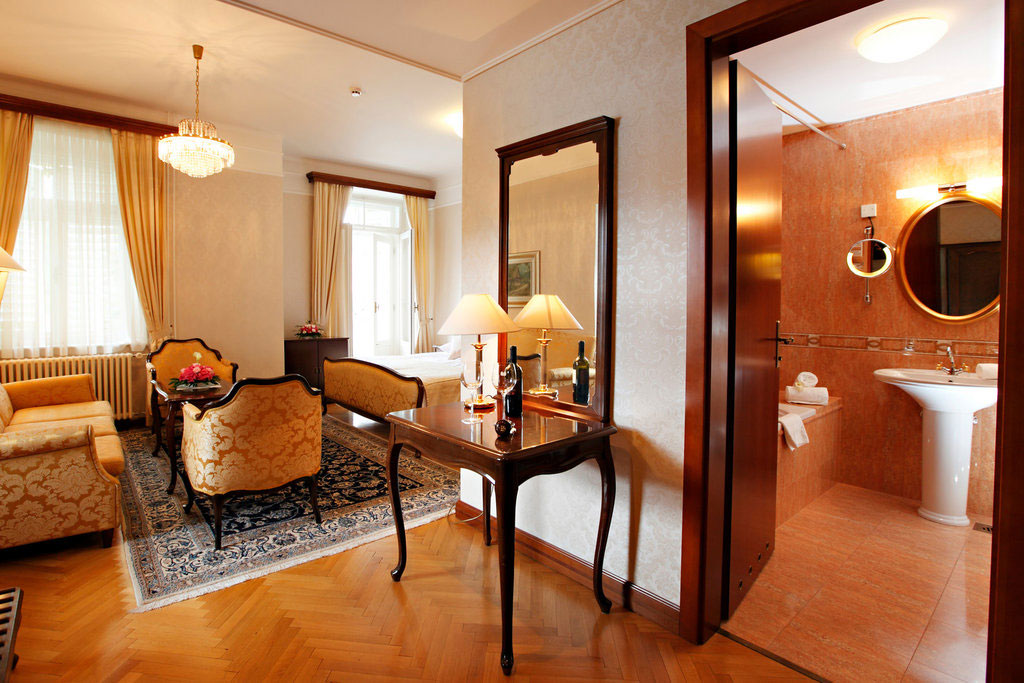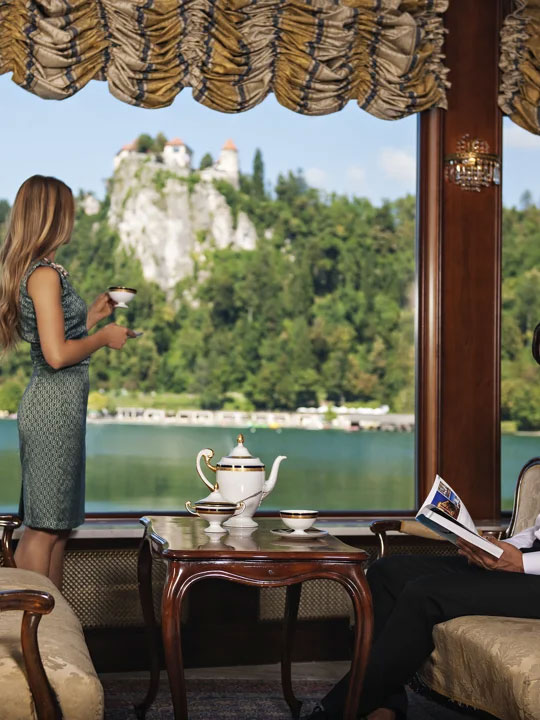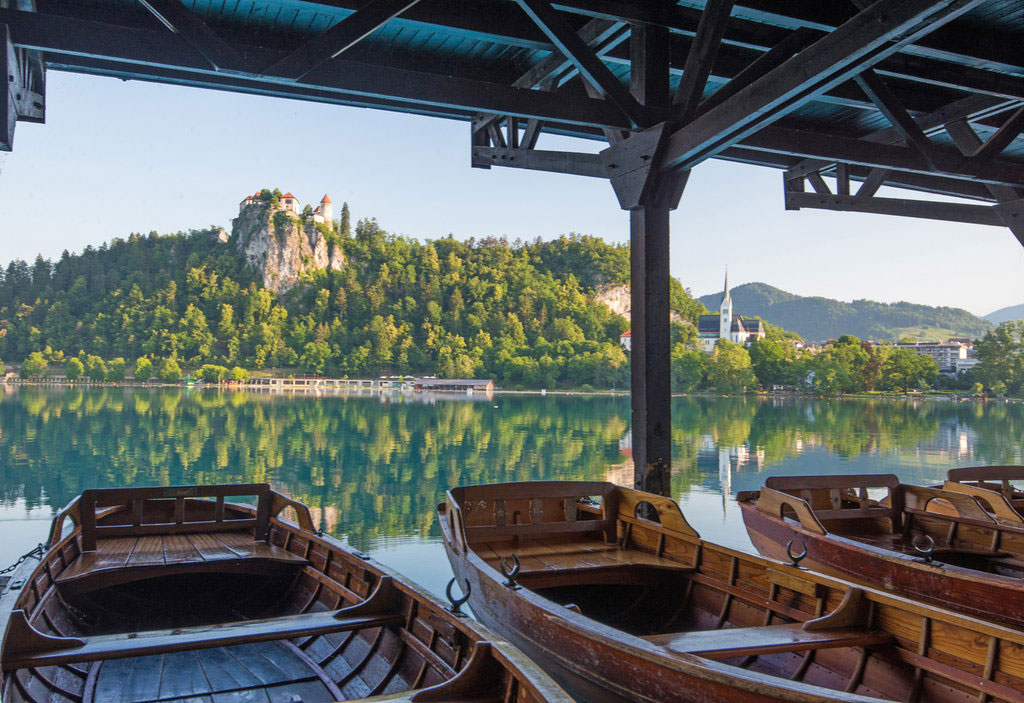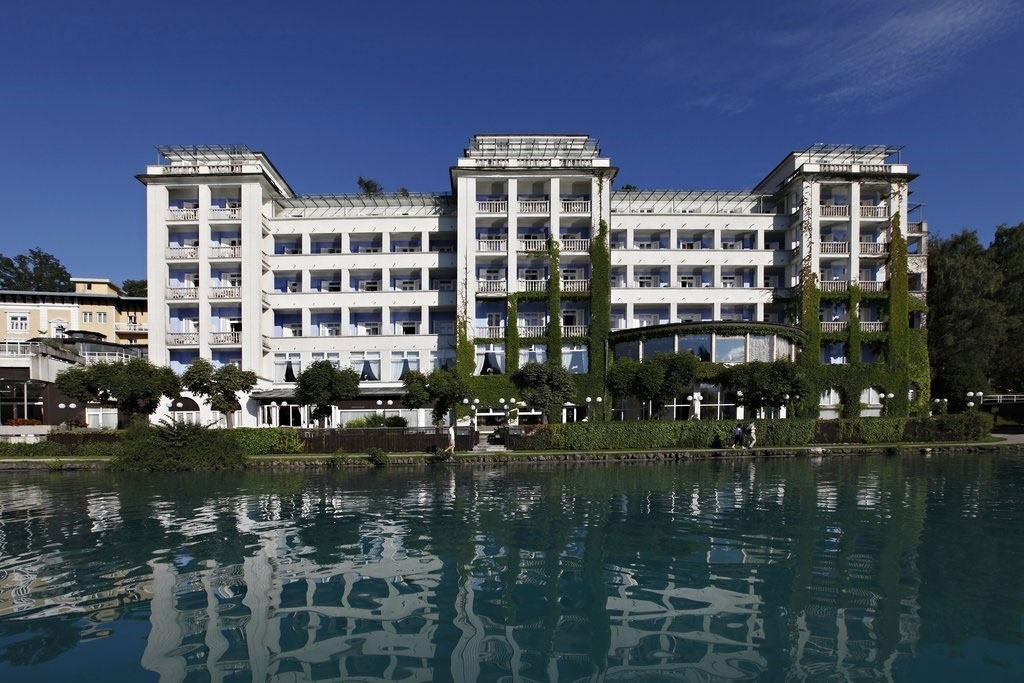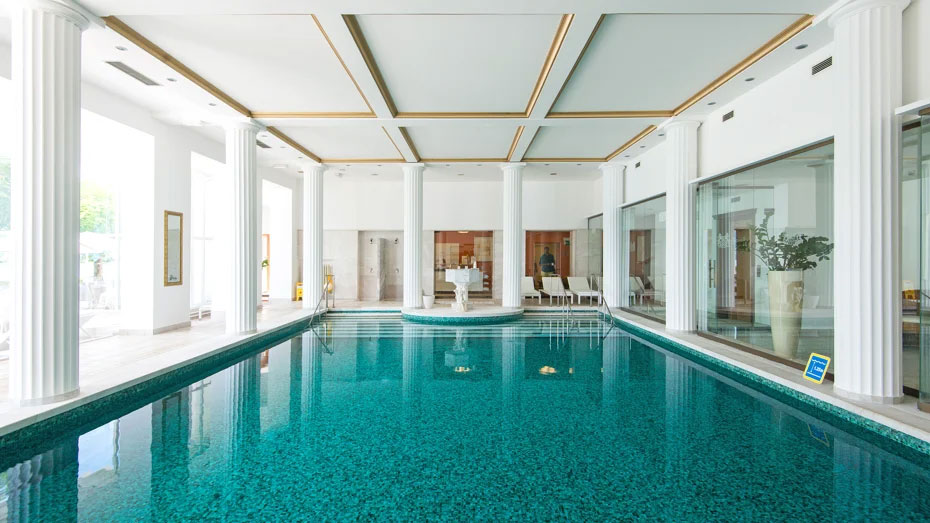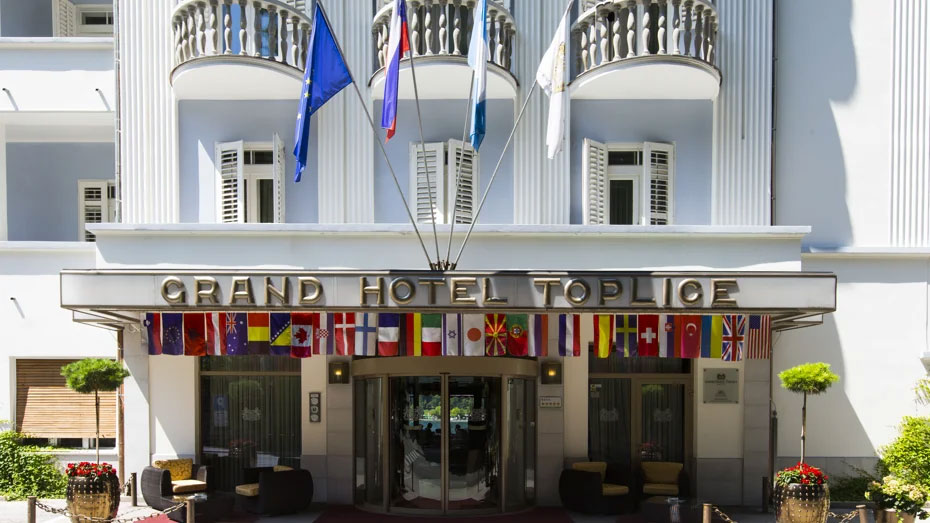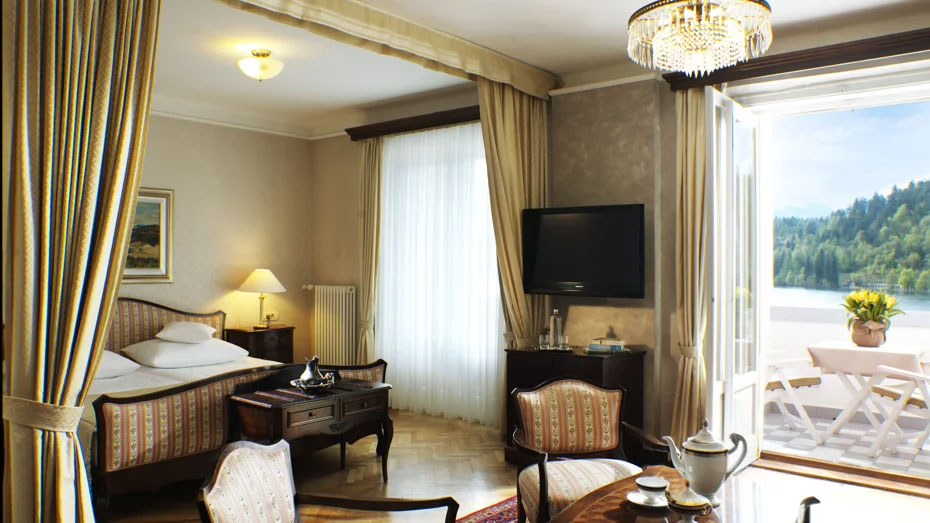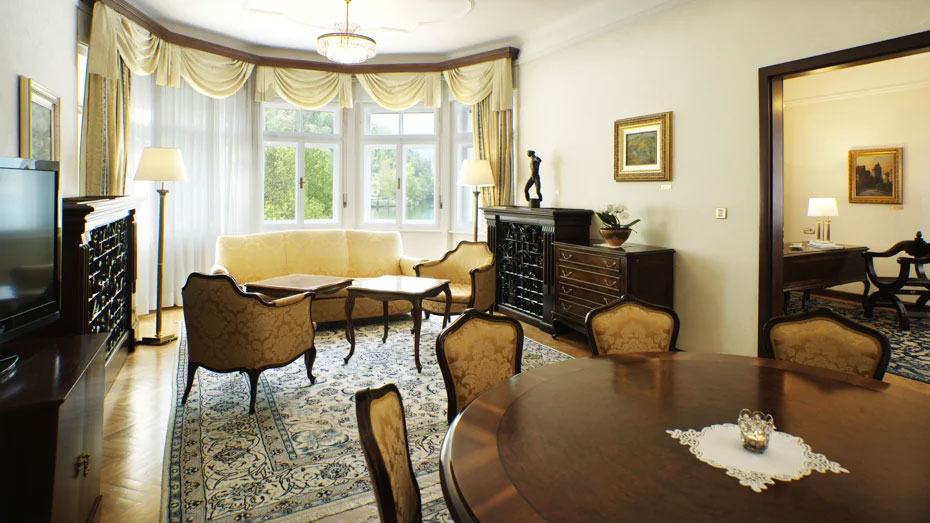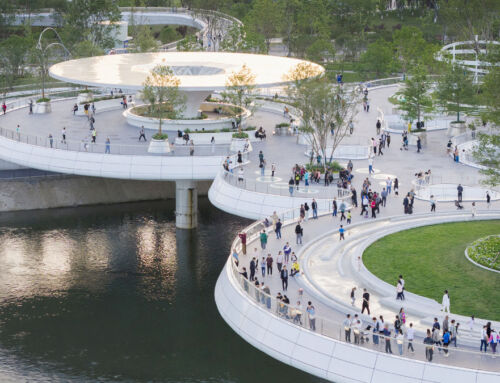In northern Slovenia, at the foot of the village of the same name, the blue waters of serene Lake Bled reflect a picturesque island, a medieval castle and, on its eastern shore, the discreet elegance of the hotel we have selected for the October page of our world hotels section. Not only is it a luxury accommodation where “genuine gentlemanly and ladylike sensitivities are still very much alive”; it is a silent witness to the country’s history, an open book of almost two centuries of thermal tradition, diplomacy and culture. We are talking about the Grand Hotel Toplice.
From therapeutic thermal spring to society hotel
Its history dates back to 1818, when two thermal springs with medicinal properties were discovered on the land where the Grand Hotel Toplice is located. In 1822, four years later, a wooden cabin was built to house the facilities of what was Bled’s first spa. However, it was not until 1854 that the postmaster of Ljubljana, named Hoffmann, who had the brilliant idea, completed the construction of a small hotel by the lake. He named it Louisenbad in honour of his wife Louise — this romantic fact must be partly what the hotel refers to when it talks about ‘the sensibilities of gentlemen and ladies’.
In northern Slovenia, at the foot of the village of the same name, the blue waters of serene Lake Bled reflect a picturesque island, a medieval castle and, on its eastern shore, the discreet elegance of the hotel we have selected for the October page of our world hotels section. Not only is it a luxury accommodation where “genuine gentlemanly and ladylike sensitivities are still very much alive”; it is a silent witness to the country’s history, an open book of almost two centuries of thermal tradition, diplomacy and culture. We are talking about the Grand Hotel Toplice.
From therapeutic thermal spring to society hotel
Its history dates back to 1818, when two thermal springs with medicinal properties were discovered on the land where the Grand Hotel Toplice is located. In 1822, four years later, a wooden cabin was built to house the facilities of what was Bled’s first spa. However, it was not until 1854 that the postmaster of Ljubljana, named Hoffmann, who had the brilliant idea, completed the construction of a small hotel by the lake. He named it Louisenbad in honour of his wife Louise — this romantic fact must be partly what the hotel refers to when it talks about ‘the sensibilities of gentlemen and ladies’.
The establishment, which eventually gained fame for its thermal waters, piqued the real-estate appetite of Jožef Luckmann, a businessman and director of the Kranj Savings Bank in Ljubljana. He acquired Louisenbad in 1870, although, for reasons that were eventually lost in the waters of Lake Bled, he decided to sell it shortly afterwards. It then passed into the hands of Count Camillo Aichelberg, who was enamoured with the small town that gives the lake its name. Aichelberg, for his part, completely renovated the building in 1875, expanding it to three floors and 40 rooms. With the improvement and expansion of the facilities, the Louisenbad Hotel became the ideal summer resort for Central European high society.
In 1889, ownership of the hotel passed to chef Gustav Valtrini and his wife Fanny, who raised its standards with exquisite cuisine, luxurious facilities—including improved thermal baths—and an atmosphere of refinement. The regional nobility could no longer resist, not even one of its most conspicuous representatives, King Alexander I of Serbia, who immersed his regal body in the establishment’s warm waters. After all, the water from the thermal springs that bubbled beneath its foundations—and still bubbles today—was recommended for the treatment of anaemia, infections, neurodegenerative diseases, rheumatism, gout… and simple pleasure.
The Jula Molnar era and the birth of the Grand Hotel Toplice
Following the dissolution of the Austro-Hungarian Empire, the hotel entered a new phase of transformation when a woman named Jula Molnar acquired the property in 1919. The daughter of a farmer, Miss Molnar was “a very capable director of a premium hotel thanks to her natural intelligence and practical experience”. With the help of architect Franz Baumgartner, Molnar added several buildings, modernised the establishment, and renamed it in 1925 as Hotel Toplice — where ‘toplice’ means ‘thermal spa’.
In 1931, after a further expansion to 123 rooms and the construction of an imposing lobby with windows overlooking the lake, the hotel earned the title of “grand”. In 1932, a Roman-style spa was added, making it the first hotel in the region with indoor swimming pools. Thermal water from the spring below was channelled into them. Furthermore, King Alexander I of Yugoslavia had definitively chosen Bled as the location for his summer residence, which helped the Grand Hotel Toplice to welcome dignitaries and aristocrats, as well as representatives of the diplomatic and political life of the time.
War, post-war period and renovation of a spa resort
At the end of the Second World War, after the Germans had passed through Bled, the provincial headquarters of the occupying administration, the state took over the Grand Hotel Toplice, where it set up a partisan military hospital for a time. However, the hotel reopened to tourists in May 1946. And in 1948, construction was completed in Bled on what was to become Marshal Tito’s summer residence, known as Vila Bled, restoring the Grand Hotel Toplice’s appeal as the preferred accommodation for numerous foreign dignitaries. Between 1967 and 1969, architect Zdravko Bregovac led a comprehensive renovation that modernised the 123 rooms while preserving the original façade.
Decades later, after its privatisation in 2000, when the Grand Hotel Toplice became part of Sava Turizem, d. d., Slovenia’s largest hotel company, and, within this, part of the Sava Hotels & Resorts chain, the hotel underwent its last major renovation with the aim of maintaining its five-star rating. With this refurbishment, which was completed in 2002, the Grand Hotel Toplice reduced the number of rooms, increased comfort and integrated a modern spa into its facilities, which was named Spa Luisa in memory of the first Louisenbad Hotel. In addition, the magnificent hotel joined the Small Luxury Hotels of the World association.
Distinguished guests of a historic hotel and a final anecdote
The guest book of the Grand Hotel Toplice reflects the history of the 20th and 21st centuries. Its halls—and its beds—have been graced by numerous artists, politicians and celebrities, including Agatha Christie and Pablo Neruda, Arthur Miller, King Hussein of Jordan, Willy Brandt, Madeleine Albright—who had already stayed there as a child in 1946—Garry Kasparov, Paul McCartney…
What better a way to end our review than with a little anecdote? On 9th May 2002, following the renovation of the hotel that had begun the previous year, it was its most loyal guest who cut the ribbon at the opening ceremony. He was Fritz Ruesch from Switzerland, who began spending his holidays at the spa hotel in the summer of 1946. Since then, he returned to the Grand Hotel Toplice to enjoy his holidays in the company of his wife Roesly for more than 50 years.
Sources: Grand Hotel Toplice, Wikipedia, The Most Famous Hotels of the World, Small Luxury Hotels of the World, Sava Hotels & Resorts.
Images: Grand Hotel Toplice, Small Luxury Hotels of the World.


